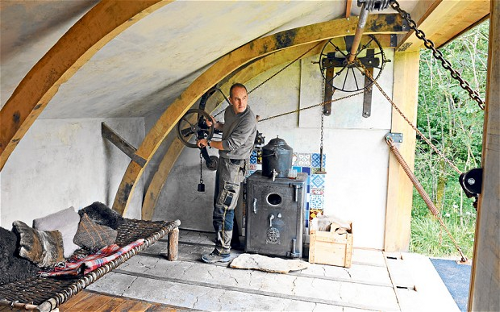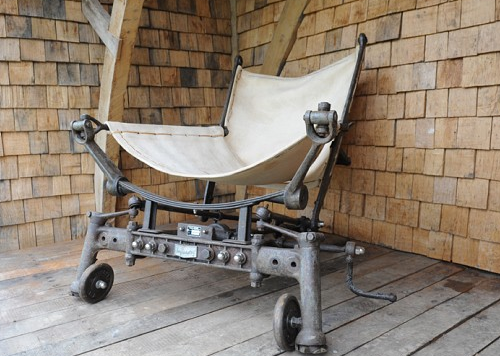Kevin McCloud is a British designer and television presenter best known for the show Grand Designs which features people who have designed and built (or rather hired people to build) their own homes in unusual, creative and sometime outlandish style. While the series usually features all the latest construction technology, McCloud (and a helpful band of friends) took a very different approach to a spin-off series that has just aired.
He bough a two acre site of wild woodland and tried to build his own shed, following two main principles: every material he used should be taken from the site itself if possible; if it wasn’t, then he should try to use materials that were in some way sustainable, natural or would otherwise have been thrown away.
The series has now concluded and it’s not really a spoiler to say it proved successful. While McCloud did have to rely on a few modern machines, he generally managed to either use traditional techniques or find some creative solutions. Much of what he did used techniques that are vary basic to scientists but were still amazing to see in this very stark before and after form.
To run down some of the key features:
The frame of the house came from two oak trees on the plot, though for the sake of his sanity McCloud cheated a little and eventually used a chainsaw to fell them. He then used gunpowder to split the logs.
The roof was made of shingles crafted from the logs, again eventually using professional machinery for the cutting (having done many by hand first), though McCloud and friends did attempt to split them using a Roman chariot like spear attached to a car axle.
The window came simply from melting sand in a kiln and then rolling the sheets using a log from the plot. While it was more translucent than transparant, and while the small sheets had to be cobbled together in a stained-glass window style of frame, the result did provide both adequate lighting and the some ability to see the outside world.
Lighting came from burning liquid fuel extracted from fat deposits taken from the sewers under the streets of central London, made up largely of cooking oil people thrown down the sink. It didn’t take at first, but a whisky-based pilot light did the trick!
The floor was made from a “cheese” made of milk and human hair.
An old bank safe became a wood burning stove.
A tractor rescued from a scrapheap provided the frame for a reclining chair, while the seat itself was a hide from a deer. (McCloud shot the deer himself, then provided urine to soak the hide.)
An outdoor toilet dropped (literally) into an underground chamber that provided biofuel for cooking. An expert who advised on its construction estimated that a dog’s daily droppings can produce enough fuel to boil a kettle, so it appeared that a human could self-power one or maybe two hot meals a day through a camping stove, making it a sustainable cooking source. However, the chamber needed to be full as a starter, so McCloud took a shovel and bag to the lions section of a nearby safari park, carnivores providing the most useful dung for this purpose.
A trip to a nearby “aircraft graveyard” provided the cylinder that houses a 737 jet engine. Turning this sideways, putting it in the ground and piping it in to a gas cylinder converted to burn wood produced a hot tub, albeit with a five hour start-up time.
A complex series of chains and gears from scrap allowed McCloud to lower and raise a wall section to become a drop-down veranda.
An attempt to make the ultimate in memory foam mattresses with a sack of cornflour and water (which makes a liquid that turns solid when pressure is applied) proved unworkable thanks to the sheer weight of the cornflour needed. Instead McCloud fell back on a more traditional woven frame.
Unwanted maps proved a suitable and eyecatching wallpaper.
The most labor intensive luxury came last: after McCloud shaved an alpaca, a local weaving group put in the 200 hours needed to turn it into a dressing gown.
http://www.youtube.com/watch?v=Fp71LsxRMog


